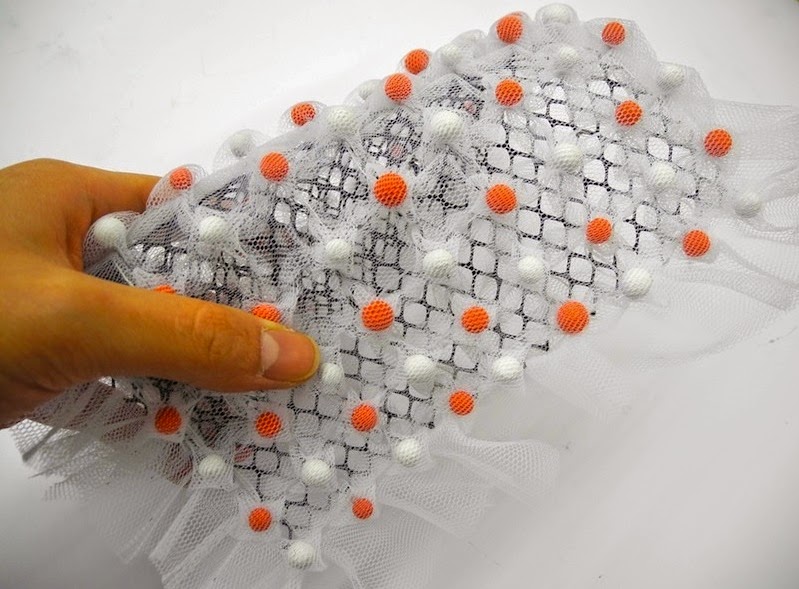Fabric tessellation of Canadian smocking is very simple yet effective, and it is constructive in a sense. I had an idea of ''stuffed smocking'' during my earlier stage of technical exploration, and it was natural to remake the sample in the material that I consider to use for my final collection.
Below are samples that I made earlier, and both are made with jersey medium weight gray fabric. One is stuffed with salad beans in each flower-like motif (you feel it only when you touch the sample), and the other is stuffed with wadding during and after smocking. Those were successful experiments as I made unusual smocking, but it lacked the visual impact and colour variations.
Left: Small smocking sample stuffed with beans Right: Smocking sample stuffed with wadding
I have been away from this idea because of the drawbacks I mentioned above, but decided to try again and overcome the problems with the new idea. The second challenge went better. Smocking with see-through fabric allowed me to express colour, and it is still at the slight level but I started seeing the connection between my sample and what I am looking forward to.
Including the smocking idea, my textile design is becoming more abstract in comparison with drawings that I got from term1. However, I haven't been able to abandon the graphic patterns completely neither, and being irresolute. A decision has to be made, and it won't be far after, so what I need to do is more visualisation, until I get the certain direction towards my final collection.
Left: Hand rolled stuffing balls Right: Smocking sample with see-through fabric
Left: Visualisation Right: Smocking sample inspired and colour-matched by one of my drawing




















